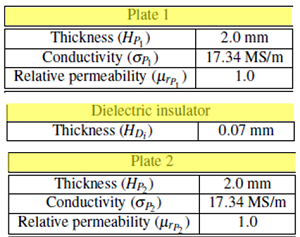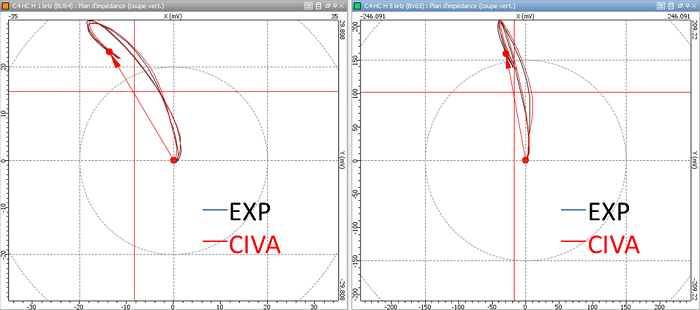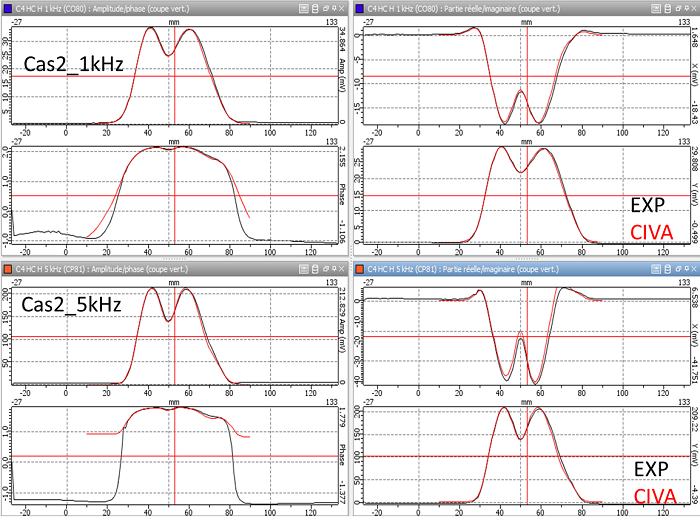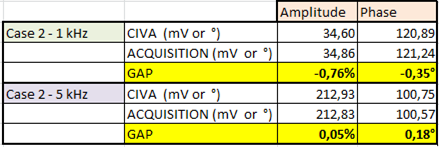Multilayers – Case N°2
SPECIMEN
The flat piece is made out of a stacking of three layers and is inspected by the coil described previously. The first and the third ones, both of 2 mm thickness, are from the same aluminium alloy. They are separated by a very thin dielectric layer of 0.07 mm thickness. Figures below describe the inspected piece and the features of its constituting materials.

Multilayers specimen

features of the 3 layers constituting the piece to inspect
FLAW
The first plate contains same flaws as the plate inspected in the case 1, that means a notch and a flat bottom hole. In the third plate is machined a flat bottom hole identical to the one of the first plate and exactly superimposed to the latter, as shown on figure below.

Notch and two FBH present in the plate to inspect
EXPERIMENT/SIMULATION COMPARISONS
The experimental measurements have been realized with an impedancemeter, it has also not been necessary to calibrate the results before the comparison.
On figures below are superimposed experimental and CIVA curves. A good agreement is observed between experiment and simulation.

Lissajous curves in impedance plane, vertical cut, 1 kHz (left) et 5 kHz (right)

From top to bottom, then from left to right hand side : Amplitude, Phase, Real part, Imaginary part. Comparisons between experimental results (black curve) and simulation results from CIVA (red curve) for the case N°2 at 1kHz (top) et 5 kHz (bottom)
Finally, the table below gathers ampltudes and phases values and confirms the very low gap between experiment and simulation, less than 1 % in amplitude and 0.5° for the phase.

Maximal amplitudes values and corresponding phases, and discrepancies between CIVA and experiment (references: experimental values).
Continue to MULTILAYERS – CASE N°3
Go back to MULTILAYERS – CASE N°1
Go back to MULTILAYERS
